Ford Capri classic cars for sale
The Ford Capri, built between 1968 and 1986, is Ford's European sport coupé inspired by the Mustang and engineered with parts from the Cortina and Taunus. With up to 1.9 million units produced, the Capri's three generations feature a huge variety of engines, numerous special models, and strong motorsport connections. Its broad appeal, supported by simple yet robust technology, and a unique European-American design mix continue to attract enthusiasts.
Search results
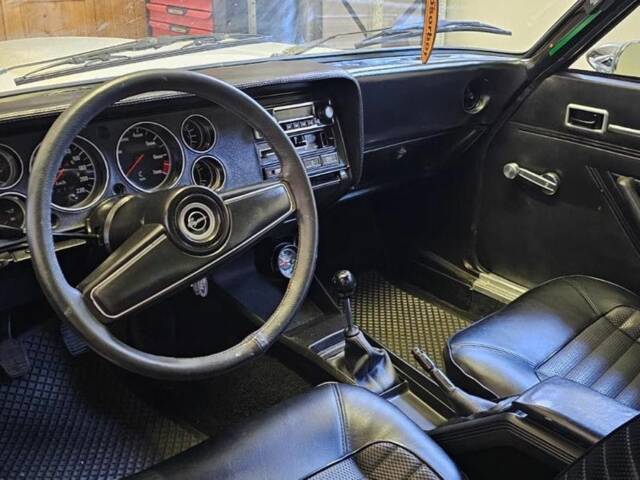
1970 | Ford Capri I 1600
Ford Capri 1.6 Mk1 | 1970 | Route 66 Auctions - For sale by auction. Estimate 22500 EUR
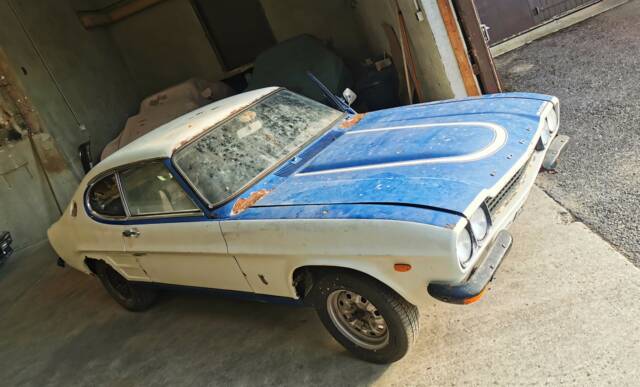
1972 | Ford Capri I 2600 RS
Rare, Toute Originale, Opportunité intéressante -
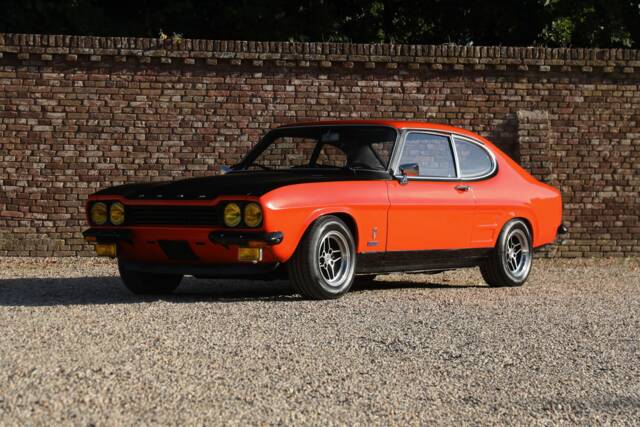
1973 | Ford Capri RS 2600
Ford Capri RS 2600 "Series 1,5" Sought after "Numbers matching" Capri RS 2600, One of 1050 "Series 1.5" examples built, Bodywork completely restored, In same configuration as it left the factory in 1973, "Sebring Red" with the Scheel bucket-seats in RS black cloth, Newly delivered in France in the area of Clermont Ferrand

1973 | Ford Capri RS 2600
Ford Capri
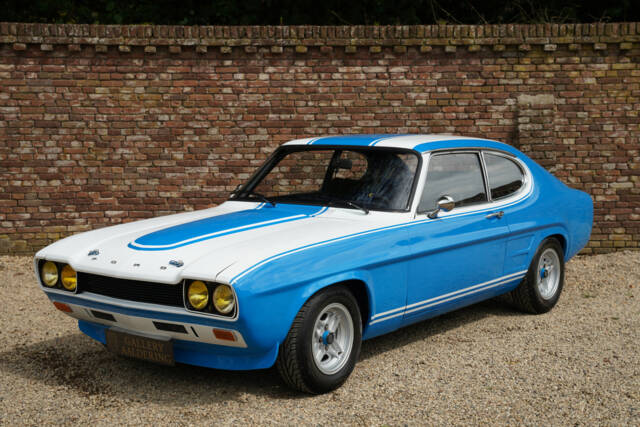
1972 | Ford Capri RS 2600
Ford Capri RS 2600 Known as the 'European Mustang' for its sporty design, Limited edition RS2600 with a powerful 2.6 litre V6 engine, Fastest Ford worldwide in its time 150 hp - 200 km/h top speed, Great condition with excellent details: exterior - interior and mechanical details, Evokes pure and sensational driving experience from a bygone era,
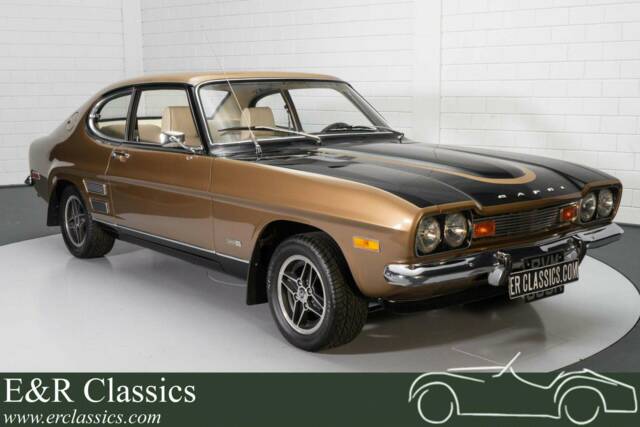
1972 | Ford Capri 2600 GT
Ford Capri 2600 GT XLR | Gerestaureerd | Airco | 1972
History of the Ford Capri
First shown at the Brussels Motor Show in January 1969, the Ford Capri was devised as Ford’s answer to Europe’s growing desire for a sporty, attainable coupé. Philip T. Clark, who helped design the Mustang, also penned the Capri’s fastback silhouette. Built at Ford plants in the UK, Germany, and Belgium, the Capri borrowed mechanicals from the Cortina and Taunus. The German market offered V-engine options, while the UK started with smaller Kent units. By 1974, the Capri II added a hatchback to address practicality, and the Capri III (from 1978) gained aerodynamic and interior upgrades. Capri production ran until 1986, with nearly 1.9 million built. Motorsport played a key role, especially with the RS2600's 1972 European Touring Car Championship victory. Despite never having an official direct successor, its spiritual replacement in Ford’s range was the Probe from 1994 onward.
Model history
The Capri line spanned three major generations. The Mk1 (1969–1974), initially coded ‘Capri ’69’, focused on a broad engine range: in Germany, V4 and V6 motors; in the UK, Kent inline engines, all rear-driven. The Mk2 (1974–1978) modernised the body with a practical hatchback, improved suspension, and a wider cabin, appealing to family buyers. The Mk3 (1978–1986) featured sharper styling, new double headlamps with halogens, and the prow-like bonnet made famous by motorsport variants. Highly engineered specials like the RS2600 (injection, aluminium Weslake heads) and RS3100 (3.1-litre Essex V6, just 250 built) were produced for homologation and sporting purposes. The Capri never received a direct successor, but its legacy shaped later Ford coupés.
Highlights and unique features
The Capri’s broad offering ranged from the entry-level 1.3L and 1.6L engines to powerful Essex and Cologne V6s. Standout models include the RS2600, with lightweight composite parts, Kugelfischer injection and Weslake aluminium heads, plus the homologation special RS3100. Sporting versions featured uprated Bilstein suspension, wider GRP fenders, front disc brakes (sometimes vented), and sporting bucket seats. Exclusive editions such as the Capri 280 Brooklands (1038 cars in Brooklands Green) and track-prepared variants with Cosworth or Perana V8s attracted enthusiasts and collectors. Capri was an important player in motorsport, picking up wins in touring categories—including the 1972 ETCC,
Technical data
Special Editions and Collectible Models
Ford produced a number of limited and desirable Capri models. The RS2600 (Germany) and RS3100 (UK) were homologation specials with extensive motorsport engineering. The 2.8 Injection Special, Series S, GP1, Laser, and rare Tickford Turbo added flair or performance. The ultimate production model, the Capri 280 “Brooklands” (1987), featured exclusive metallic green paint, 15'' alloys, Recaro leather seats, and an engraved production plaque—only 1038 units built. Motorsport specials included Zakspeed and Perana V8-powered Capris used in DRM and South Africa.
Weak Spots and Common Issues
The Capri is robust, but watch carefully for corrosion—particularly around wheel arches, sills, boot corners, and the chassis floor. Water ingress and seam rust are common, especially on unrestored cars. Mechanically, Ford’s durable engines and drivetrains last, but attention is needed for cooling systems and rear differential seals. Spares supply for standard models remains relatively strong due to specialist support, but rare S and RS trim can be costly.
Engine and performance, transmission and handling
Capri driving experience varies widely: base four-cylinders are lightweight and eager; big V6s (especially 2.8 Injection and RS3100) provide strong straight-line acceleration (up to 150hp for RS models and 158hp for 2.8i) and relaxed motorway cruising. Most models use rear coil- or leaf-sprung suspension, producing lively handling with robust grip, aided by Bilstein setups in RS and S models. Four-speed manuals are standard, with 5-speed and automatic available later. Brakes range from basic discs/drums to vented discs and upgraded servo systems on higher-end models. - RS2600: 2.6-litre aluminium-head V6, Kugelfischer injection, 150hp; Bilstein suspension; motorsport-tested, ETCC winner.
- RS3100: 3.1L Essex V6, 148hp, 250 units built for Group 2, unique rear spoiler and body kit.
- 2.8 Injection Special: Bosch K-Jetronic injection, 158hp, uprated cooling, 5-speed gearbox, Recaro seats.
- 280 Brooklands: Metallic green, 7x15'' alloys, Recaro leather, 1038 units.
- Standard 1.6/2.0/3.0S: Balance of performance, affordability and parts supply.
Interior, comfort, exterior and design
Designed by Philip T. Clark, the Capri’s long bonnet, aggressive fastback, and low coupé roofline directly echo American muscle aesthetics adapted for Europe. Mk3 introduces the distinct ‘power bulge’ bonnet and double halogen headlamps. Interiors range from basic vinyl to well-equipped S and Injection specials sporting Recaro, Scheel or Baquet race-style seats and full auxiliary gauge clusters. Factory options included electric sunroof, vinyl roof, tinted windows, spot fog lamps, ‘Pepperpot’ alloys, and distinctive tape stripe or ‘Spa Special’ decals. The rear seats (2+2) and large boot offer genuine touring ability for a coupé. The 280 Brooklands features exclusive metallic green paintwork, Recaro leather, and unique wheels.
Other notable features
The Capri’s international appeal saw market-specific differences: US models feature unique bumpers, lights, and emissions equipment; Australian versions sometimes used locally-built or even V8 engines. Its presence in motorsport—ETCC win, track specials, and local rally successes—cements its reputation for more than just style. Numerous accessories and period upgrades (audio, consoles, extra instrumentation) keep restoration and individuality straightforward.
Summary
The Ford Capri stands out in the classic market for its blend of aggressive design, broad range of engines, and motorsport credentials. Model availability is concentrated in Serie I and Serie II '78, but demand is highest for early originals and rare sporty variants. Durable engines and strong specialist support drive continued interest, though rust is a common issue. For enthusiasts wanting a European coupé with Ford’s blend of reliability and character, the Capri remains in high demand among classic car fans.





